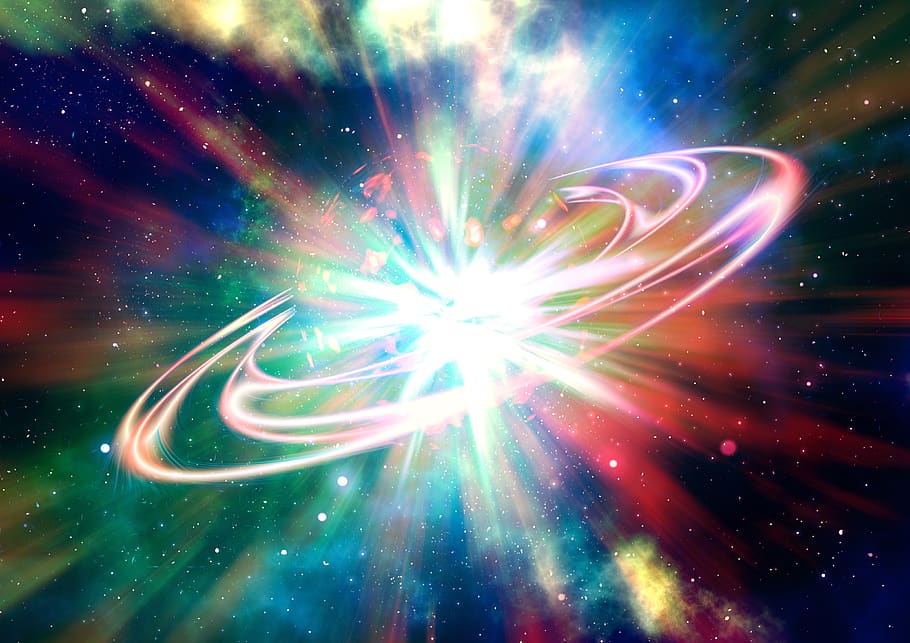Have you ever gazed up at the night sky and wondered how it all began? The stars, the galaxies, the vastness of space—everything traces back to a single, monumental event: the Big Bang. Understanding the Big Bang Theory isn’t just for scientists with fancy degrees; it’s a story that belongs to all of us, shedding light on our place in the cosmos.
What is the Big Bang Theory?
The Big Bang Theory is the prevailing explanation for how the Universe began. Imagine the entire Universe condensed into a point smaller than a pinhead, a singularity, where all the matter and energy of the cosmos were concentrated. Then, about 13.8 billion years ago, this singularity exploded, expanding rapidly and giving birth to everything we know.
The Universe before the Big Bang
What was there before the Big Bang? This is one of the most perplexing questions in cosmology. Some theories suggest a state of quantum fluctuations, tiny random changes in energy, that sparked the Big Bang. Others propose entirely different pre-Big Bang conditions, but the truth remains one of science’s greatest mysteries.
The initial singularity
The concept of the initial singularity is mind-boggling. This singularity was a point of infinite density and temperature. It’s hard to imagine, but it’s a crucial part of the theory. In this state, the laws of physics as we know them didn’t apply. The singularity marked a boundary beyond which our understanding breaks down.
The explosion: the Big Bang event
The Big Bang itself wasn’t an explosion in space; it was an explosion of space. Picture a balloon being inflated. That’s the universe expanding from an incredibly hot and dense state. In mere fractions of a second, the universe grew exponentially — a period known as cosmic inflation.
Inflationary epoch
During the inflationary epoch, the universe expanded faster than the speed of light. This might sound impossible, but it doesn’t violate any physical laws because space itself was stretching. This rapid expansion smoothed out the universe, setting the stage for the formation of galaxies and other structures.
Formation of fundamental forces
As the universe cooled, it reached temperatures where different fundamental forces emerged. Gravity, electromagnetism, and the strong and weak nuclear forces began to operate independently. These forces shaped the structure of the universe, influencing how particles interacted and clumped together.
Creation of matter and antimatter
In the early universe, energy transformed into particles and antiparticles. For every particle, there was an antiparticle. When these met, they annihilated each other, releasing energy. Yet, a slight imbalance—more matter than antimatter—allowed the universe to become filled with matter, paving the way for stars, planets, and ultimately, us.
Formation of the first elements
As the universe continued to cool, protons and neutrons came together to form the first nuclei in a process called nucleosynthesis. This process created the first elements, primarily hydrogen and helium, with traces of lithium. These elements would later become the building blocks for stars and galaxies.
The cosmic microwave background (CMB)
One of the most compelling pieces of evidence for the Big Bang is the Cosmic Microwave Background (CMB) radiation. Discovered accidentally in 1965, the CMB is the afterglow of the Big Bang, a faint radiation that fills the universe. It provides a snapshot of the universe when it was just 380,000 years old, offering a glimpse into its early conditions.
Formation of galaxies and large-scale structures
As the universe expanded and cooled, gravity began to pull matter together, forming the first stars and galaxies. These galaxies grouped into clusters, and clusters into superclusters, creating the large-scale structure of the universe. The distribution of these structures is another piece of evidence supporting the Big Bang Theory.
Observational evidence supporting the Big Bang Theory
The Big Bang Theory isn’t just a wild guess; it’s supported by robust evidence. One key piece is the redshift of galaxies. As galaxies move away from us, their light stretches into longer wavelengths, a phenomenon known as redshift, indicating the universe is expanding. Additionally, the abundance of light elements and the CMB radiation provide strong supporting data.
Challenges and alternatives to the Big Bang Theory
No theory is without its challengers. The Steady State Theory, for instance, posited that the universe has always existed in a constant state. However, this theory fell out of favor due to the overwhelming evidence for the Big Bang. Other models, like cyclic theories, suggest the universe goes through endless cycles of expansion and contraction.
Recent advances and discoveries
In recent years, technological advancements have allowed us to peer deeper into the cosmos. Telescopes like the Hubble Space Telescope and observatories like the European Southern Observatory have provided stunning images and data, confirming and refining our understanding of the Big Bang. These modern tools help us answer old questions and discover new mysteries.
The Big Bang Theory is more than just a scientific explanation; it’s a narrative that connects us to the cosmos. From the tiniest quantum fluctuations to the vast galaxies, understanding the origins of the universe gives us insight into where we come from and where we might be headed. As technology advances, so too will our understanding, making the journey of discovery an exciting adventure.


